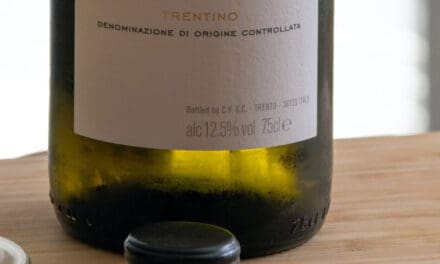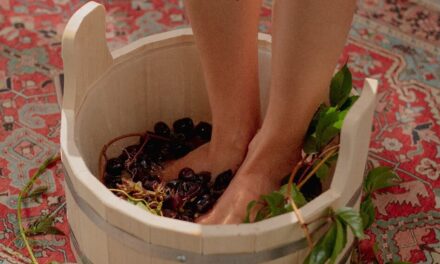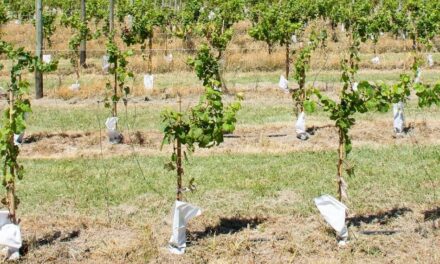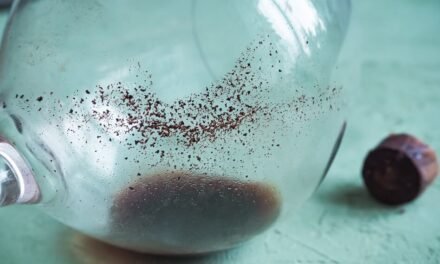Around the world, vintners produce tens of thousands of wines, and they differ in many aspects. To distinguish good-quality from bad-quality wines, wine experts and lawmakers have developed classification systems. The purpose of these systems is to give customers details that help them understand a wine’s characteristics. This information is called “appellation of origin”.
An appellation of origin is a nomination for wine that is tied to a geographical region. In most cases, it’s also subject to regulations regarding the production and the characteristics of a wine. So vintners may only print an appellation of origin on their bottle labels if their wines fulfill specific requirements.
Throughout the big European wine countries, there are multiple systems to regulate the appellation of origin and the winemaking rules connected to them. But New World wine countries have implemented appellation systems as well. In this article, we will discuss all the details:
- The French Appellation of Origin System
- The Italian Appellation of Origin System
- The German Appellation of Origin System
- The Spanish Appellation of Origin System
- The Portuguese Appellation of Origin System
- The American Appellation of Origin System
- The Australian Appellation of Origin System
WHAT IS THE PURPOSE OF AN APPELLATION OF ORIGIN?
Many wines from specific regions are world-famous for their quality. And consumers actively search for these high-quality wines. The appellation of origin is a help to find them. It’s a classification system that ensures that wines from specific regions fulfill precise quality standards.
In many wine countries, especially in Europe, these quality standards are written in law. Winemakers who don’t follow them may not use an appellation of origin for their wines. Thus, these nomination systems are legal guarantees for wine quality that consumers can trust.
On the other side, it’s also a protection mechanism for vintners who dedicate themselves to these quality standards. It prohibits competitors, who invest less time and money into making their wines, from using the appellation of origin on their bottle labels. So winemakers who follow the rules have a competitive advantage.
WHAT CAN AN APPELLATION OF ORIGIN TELL YOU ABOUT A WINE?
As the appellation of origin is tied to specific production standards, it can tell you something about the characteristics of a wine. The information you can gather from it includes:
- the color of the wine
- the varietals that the vintner used to make it
- specific production methods
- whether the wine aged in oak or not (and if yes, how long)
- the level of sweetness
- the level of tannins
- the alcohol content
- aromas and tastes
Of course, you need to know about the rules that apply for an appellation to gain information from these ties. If you are not a sommelier or a professional wine expert, it is unlikely that you know all the rules from every single appellation around the globe. Nevertheless, let us discuss the basics of the most important nomination systems.
THE APPELLATION OF ORIGIN FOR FRENCH WINES
Appellation d’Origine Contrôlée (AOC)
The “Appellation d’Origine Contrôlée” (English: controlled designation of origin) system is one of the most rigid classification schemes in the world. It regulates not only the origin but also the grapes and the production methods that vintners may use for their wines. Besides, it gives guidelines for their styles and tastes. A jury of the “Institut national de l’origine et de la qualité” (INAO, English: national institute of origin and quality) must test and approve each wine before receiving an AOC label.As of 2018, the French AOC system included 313 appellations. Many of them are sub-regions of bigger AOCs or wine regions. For instance, the world-famous Bordeaux region contains about 50 AOC appellations. One of them is the Médoc AOC, which has several sub-appellations such as Haut-Médoc AOC or Saint-Estèphe AOC.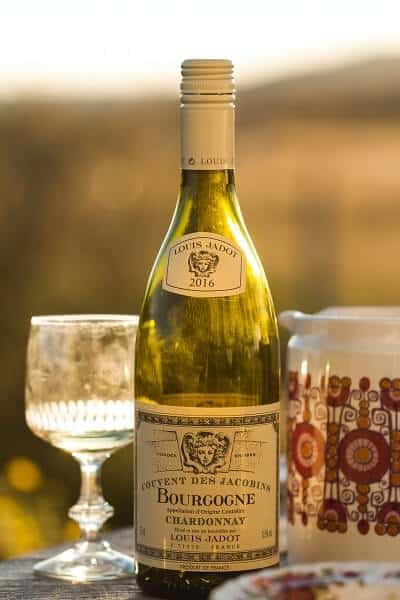
Bourgogne AOC Wine from France
Indication Géographique Protégée (IGP)
The second-highest tier of French wine is the “Indication Géographique Protégée” category. Wines in this category are also known as “Vin de Pays” (VDP, English: country wine). An IGP classification provides consumers with information about a wine’s origin, but it typically identifies much larger areas than the strict AOC regulations. It also gives vintners more freedom in terms of varietals and production methods.The IGP tier includes more than 150 appellations in three levels of specificity. There are six at the top regional level. They roughly correspond to the big wine regions:- VDP du Jardin de la France = Loire
- VDP de L’Atlantique = Bordeaux, Dordogne, Charentais
- VDP du Comte Tolosan = South West
- VDP d’Oc = Languedoc Roussillon
- VDP Portes de Mediterranee = Corsica, Provence
- VDP des Comtés Rhodaniens = Beaujolais, Rhône, Savoie
Vin de France
The “Vin de France” (English: wine of France) classification is the lowest quality tier for French wine. Formerly, its name was “Vin de Table” (English: table wine). Winemakers basically have to follow only one rule: They must use grapes cultivated anywhere in France. As a consequence, these wines often are blends from numerous varietals.Vintners that make Vin de France wines focus on quantity and low-cost production methods. Their wines are intended to be consumed soon after bottling. Typically they are light and fruity, but not very complex. And they have no aging potential at all. The fact that many Vin de France styles come in boxes instead of bottles is another indicator of their rather low quality.THE APPELLATION OF ORIGIN FOR ITALIAN WINES
Italy has a long history of winemaking as well. And like the French, Italians have a multi-level appellation system. Actually, they copied many rules of their neighbors to the North-East when they created their system in 1963. The Italians distinguish four levels of quality.Denominazione di Origine Controllata e Garantita (DOCG)
The highest tier is the “Denominazione di Origine Controllata e Garantita” category (English: controlled and guaranteed designation of origin). An official jury by the government analyzes and tastes all wines before they get permission to carry this label. Winemakers must follow very rigid rules to gain it. Typically, they can only use a few varietals to make DOCG wines. Besides, the rules regulate the maximum yields per year, the alcohol level, the aging requirements, and other production factors.The DOCG category is relatively new. In 1980, the first four regions gained DOCG status: Barbaresco and Barolo in Piedmont and Brunello and Vino Nobile in Tuscany. Over the years, this number has grown massively. Today, Italy has 75 DOCG wines. With 19 DOCG appellations each, Piedmont and Tuscany still stand out in this category.Denominazione di Origine Controllata (DOC)
“Denominazione di Origine Controllata” (English: controlled designation of origin) is the second tier in the Italian appellation of origin system. When the Italians created their appellation system, this was the highest category. It was not only used for wine but also cheese, olive oil, and other typical Italian food products. But winemakers felt it was too easy to gain the DOC label and called for stricter regulation. This call led to the creation of the DOCG tier that we have just discussed.Today, DOC is an exclusive label for wines. Foods now have their own appellation label called “Denominazione di Origine Protetta” (DOP, English: protected designation of origin). With more than 330 DOC wine areas across the country, this tier is the most comprehensive in the Italian appellation system.DOC wines have to fulfill quality requirements, just like DOCG wines. These requirements are less strict, though. Nevertheless, they contain specific rules regarding varietals, production methods, maximum yields, minimum aging periods, alcohol content, and other factors.Indicazione Geografica Tipica (IGT)
The third quality tier was introduced in 1992, so it is even younger than the DOCG category. It is called “Indicazione Geografica Tipica” (English: indication of geographical typicality) and contains about 120 single IGT appellations.IGT wines do not fulfill the strict requirements for DOC and DOCG wines. But they still are good wines that represent their regions’ characteristics. Although winemakers have more freedom to create them, basic rules regarding varietals and production methods still can apply.Vino da Tavola (VDT)
A wine that doesn’t belong to any of the superior quality brackets because of its ingredients or production methods is a “Vino da Tavola” (English: table wine). That does not necessarily mean that it is a bad wine. It just does not have the typical characteristics that wines in the higher tiers have.THE APPELLATION OF ORIGIN FOR GERMAN WINES
Germany has not the same international reputation as France and Italy. Nevertheless, it has a long winemaking tradition and produces some excellent wines. To distinguish their quality, vintners use two different appellation of origin systems.The Legal Appellation of Origin System
The German wine law has regulated wines’ appellation of origin since 1971. Initially, it was based on their sugar content, so its focus was the ripeness of grapes. In 2009, legislators adjusted the system to bring it in line with the new European wine laws. Since then, it has classified wines based on their origins, just like the French and Italian appellation systems. It contains four tiers.Prädikatswein
The best wines in Germany gain the label “Prädikatswein”, formerly “Qualitätswein mit Prädikat” (English: quality wine with specific attributes). Vintners have to follow very strict rules to receive it. For instance, they have to cultivate all grapes in the same area within one of the 13 official German wine regions:- Ahr
- Baden
- Franken
- Hessische Bergstrasse
- Mittelrhein
- Mosel
- Nahe
- Pfalz
- Rheingau
- Rheinhessen
- Saale-Unstrut
- Sachsen
- Württemberg
- Kabinett (English: cabinet): Typically semi-sweet wine with crisp acidity, made from fully ripened grapes.
- Spätlese (English: late harvest): Grapes for these wines are harvested about one week after the usual harvest date of table wine grapes. So they are riper and sweeter. Spätlese wines have a full body and are off-dry. Typically, they are a little sweeter and have more significant fruity aromas than Spätlese wines. There are exceptions, though.
- Auslese (English: selected harvest): To produce Auslese wines, vintners must hand-pick selected bunches of very ripe grapes. These wines cover a wide range of styles from dry to sweet, but semi-sweet wines are most common.
- Beerenauslese (English: selected berry harvest): Winemakers get even pickier for Beerenauslese wines. They choose not bunches but single overripe grapes individually. The resulting dessert wines are rich and sweet in taste.
- Trockenbeerenauslese (English: selected dry berry harvest): For this type of extremely sweet wine, winemakers only use individually selected grapes that naturally dry on the vines. In many cases, these grapes are affected by noble rot.
- Eiswein (English: Ice Wine): Eiswein is another type of sweet dessert wine. Grapes for Eiswein freeze naturally on the vines. They contain only a little juice, but this juice is extremely rich in sugar.
Qualitätswein b.A.
Wines in the second category are called “Qualitätswein bestimmter Anbaugebiete” (English: quality wine from a specific region). A Qualitätswein comes from one of the 13 German wine regions. But in contrast to a Prädikatswein, the criteria to receive this label are less strict.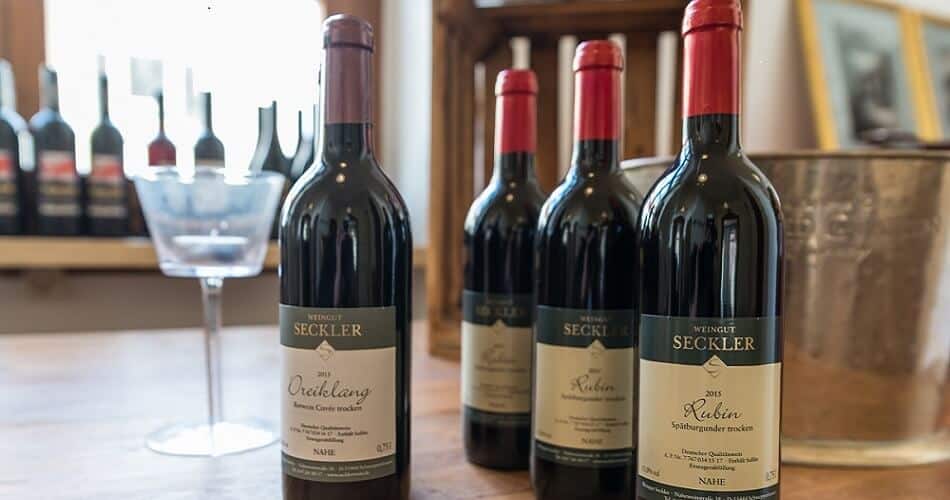
German Qualitätswein b.A. from the Nahe Region
All grapes for Qualitätswein must come from the same region. The wine must have a minimum acid level and a minimum alcohol content according to regional laws.
Landwein
The “Landwein” (English: country wine) tier is the third category in the German appellation system. Wines in this category always are dry or off-dry. They have to contain a specific level of alcohol, and winemakers may not blend them. But besides that, there are no critical rules to follow when producing them.
On the bottle label of a Landwein, the winemaker has to indicate the origin of the grapes. However, this location does not have to be within one of the official German wine regions.
Tafelwein
The lowest tier for German wine is the “Tafelwein” (English: table wine) category. Winemakers are very free in terms of production methods when they make Tafelwein. They just have to use grapes from permitted varietals and ensure the alcohol content is between 8.5% and 15%.
Surprisingly, there is not a significant supply of Tafelwein in Germany. The vast majority of wineries produce wines that qualify for the higher-quality categories.
The VDP Appellation of Origin System
The official appellation of origin system caused some dissatisfaction among winemakers. They criticized especially the fact that the official wine regions are very big. As their subregions’ reputations can differ significantly even within the same region, the region name is not a safe indicator for high-quality wine.
To solve this problem and give consumers more transparency, the “Verband Deutscher Prädikatsweingüter” (VDP, English: association of German quality wine estates) created a new appellation system in 2012. To receive one of the new labels, winemakers need to be members of the VDP.
The VDP appellation of origin system consists of four quality tiers. No matter the category they belong to, all wines with a VDP label can carry the same predicates as Prädikatweine, for instance, Kabinett, Spätlese, or Eiswein.
VDP.Grosse Lage
“VDP.Grosse Lage” (English: great growth, also: “grand cru”) is the highest quality level for German wines. Dry wines might carry the label “VDP.Grosses Gewächs” which refers to the same category. Only a few varietals typical for the wine region are allowed to produce these wines. Winemakers have to follow traditional production methods and rules. These include the need for a selective manual harvest of only ripe grapes and a maximum yield of 50 hectoliters per hectare of vine stocks. Wineries are monitored throughout the entire growing season. And a board of VDP experts inspects and approves all wines before they receive the VDP.Grosse Lage label.
VDP.Erste Lage
The second tier of the new VDP appellation of origin system is confusingly called “VDP.Erste Lage” (English: first growth or “premier cru”). Erste Lage wines are extraordinarily good and represent the characteristics of their home region. They share many rules with the Grosse Lage category, but some are less strict. For instance, vintners can choose from a wider variety of permitted varietals. Also, they can process up to 60 hectoliters of wine per hectare. However, they have to follow traditional production methods and hand-pick all grapes.
VDP experts monitor winemakers who produce Erste Lage wines, just like producers of Grosse Lage wines.
VDP.Ortswein
VDP.Ortswein is the third quality category of the VDP appellation of origin system. Wines in this tier are often made from the leftover grapes after the preselection for Grosse Lage or Erste Lage wines. Vintners may produce up to 75 hectoliters of wine per hectare, given that they use regional varietals. They have more freedom to be creative, for instance, by using other than the traditional production methods.
VDP.Gutswein
The fourth and last quality tier is the VDP.Gutswein category. This tier gives winemakers the most freedom. Often this results in wines representing the philosophy of the vintner rather than the region’s characteristics. All varietals are allowed, but winemakers are still limited to an output of 75 hectoliters per hectare of vines.
THE APPELLATION OF ORIGIN FOR SPANISH WINES
Spain’s tradition is inseparably connected to food and wine. So it is not surprising that the first attempts to regulate wine production happened centuries ago. In the 18th century, the king issued several decrees for this purpose. But it took until the 1920s that the first classification system for wine came into effect. In 1996, legislators reworked it and created the appellation of origin system as we know it today.
Denominación de Origen Protegida
The basis of the Spanish appellation of origin system is the “Denominación de Origen Protegida” (DOP) label. As of 2019, 96 DOP regions existed. Each has a regulatory council that sets the rules that winemakers have to follow. These rules include the varietals, the production methods, the maximum yields, the alcohol content, and other details.
The DOP tier consists of four sub-tiers that indicate different quality levels. Vintners can use either the DOP label or the proper sub-tier label when naming their wines.
Denominación de Origen Calificada (DOCa)
“Denominación de Origen Calificada” (English: denomination of qualified origin) is the highest quality tier for Spanish wines. Only after having DO recognition for at least ten years can regions get DOCa status. All wineries that want to use this label have to implement a control system that covers the complete production process. They may not make wines other than DOCa wines, except for VP wines (see below).
As of 2020, just two regions have gained DOCa status: Rioja and Priorat.
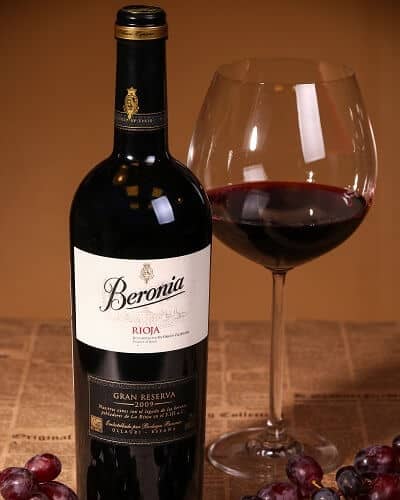
Rioja DOCa Wine from Spain
Denominación de Origen (DO)
Most Spanish DOP wines belong to the second sub-tier: “Denominación de Origen” (English: denomination of origin). In total, 68 DO regions exist. Among the most prominent are the Jerez-Xérès-Sherry DO and the Cava DO. The first is famous for Sherry, and the second for sparkling wine.DO wines must be made from grapes that are typical to the region and represent its characteristics. And vintners must cultivate all grapes within this region. Before a region can receive the DO status, it must have been an IGP region for at least five years.Vino de Pago (VP)
The “Vino de Pago” (English: estate wine) tier is a special category for outstanding wines. All steps of the production process have to happen on one single estate.The Vino de Pago category is controversial among the wine community in Spain. The reason is that wineries can set their own rules regarding varietals, production methods, and aging processes. So it basically frees them from the rules of the DOP.Because of this controversy, not all wine regions use this tier. In fact, only three DOP regions recognize VP wines:- Castilla-La Mancha, a region east of Madrid
- Navarra on the border of France
- Valencia y Aragón on the Mediterranean coast
Vino de Calidad con Indicación Geográfica (VC)
The third sub-tier of the DOP category is the “Vino de Calidad con indicación geográfica” tier (English: quality wine with geographic indication). Wines in this category represent the characteristics of the region. They do not fulfill all of the strict criteria for DO wines, though.Across Spain, only seven VC wine regions exist.Indicación Geográfica Protegida (IGP)
The second main tier of the Spanish appellation of origin system is the “Indicación Geográfica Protegida” category (English: protected geographical indication). Wines in this tier represent at least one characteristic of their home region. At least one step of the production process has to take place there as well. But besides, vintners have many freedoms regarding varietals, maximum yields, and other specifications.Traditionally, the name for this category was “Vino de la Tierra” (VT, English: country wine). You can compare it to the French “Vin du Pays” category. It recognizes 42 different IGP regions.Vino de Mesa (VdM)
The “Vino de Mesa” tier (English: table wine) is the bottom category of Spanish wine. All wines from unclassified vineyards belong to this category. That does not necessarily mean that wines in the VdM tier are bad. In some cases, they can be high-end wines that just have not been classified yet because of following new, experimental methods.THE APPELLATION OF ORIGIN FOR PORTUGUESE WINE
The Portuguese appellation of origin system distinguishes three main tiers like the Spanish system. However, it does not recognize similar sub-tiers.Denominação de Origem Controlada (DOC)
The first tier is the “Denominação de Origem Controlada” category (English: controlled denomination of origin). Across Portugal, 31 DOC regions exist. The regulations are strict and prescribe the varietals to use, the maximum yields, and other details of the production process. An official jury has to taste and approve all DOC wines before they can use this label.Vinho Regional (VR)
The second tier of the Portuguese appellation of origin system is the “Vinho Regional” category (English: regional wine). It includes 14 VR regions. According to the European Union’s new standardized appellation system, this category has the new title “Protected Geographical Indication” (IPG). But most Portuguese winemakers prefer to use the traditional nomination. Rules for VR wines are much looser than for DOC wines and give winemakers a lot of freedom. Nevertheless, some VR wines have an excellent reputation. In some cases, the only reason for not carrying DOC labels is that they don’t use the officially permitted grapes.Vinho de Mesa
The lowest category for Portuguese wine is the “Vinho de Mesa” (English: table wine) tier. All wines that do not fulfill DOC or VR rules belong to this category.THE APPELLATION OF ORIGIN FOR AMERICAN WINES
Compared to France, Italy, and Spain, the United States has a relatively simple appellation system. It knows only one category: “American Viticulture Area” (AVA). To use an AVA label, vintners must meet only one requirement: They must grow at least 85% of the grapes for their wines in the AVA region. Apart from that, vintners can make their wines how they please. Therefore, the AVA label does not tell consumers much about a wine’s quality.By the end of 2019, 246 AVA regions existed in 33 states. More than half of them are located in California. The single regions differ significantly in size. With more than 7.6 million hectares, the Upper Mississippi River Valley AVA is one of the biggest. In contrast, the Cole Ranch AVA in California only has about 24 hectares.
Some AVAs regions are sub-regions of bigger AVAs. For instance, within the famous Napa Valley AVA, 16 sub-regions, such as the Atlas Peak AVA or the Oakville AVA, exist. And Napa Valley is, along with 53 other AVAs, a part of the bigger North Coast AVA.
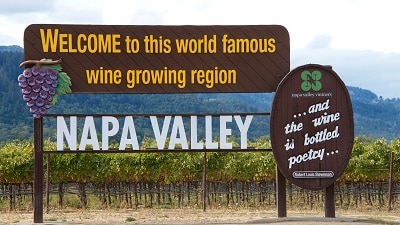
Napa Valley APA, California, USA


